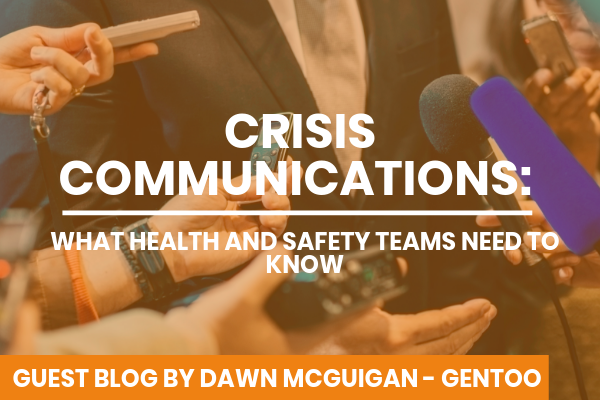Find out more about our Digital Innovation Seminar
Our Director of Member Engagement, Kate Maughan talks us through the Digital Innovation in Housing Seminar taking place next month.
Our digital innovation seminar is taking place on 18th July in Leeds – book your place here.
Digital innovation is now recognised as key to an organisation’s success. Whether it’s bringing in new technology, making the most of existing systems, or using data to better effect, we know that harnessing the power of digital can improve how we engage with our customers, help them to self-serve, help us to support vulnerable people and provide better value for money.
It also presents new challenges – agile working for new IT projects is exciting (and sometimes terrifying!), and we’re dedicating a session at the seminar to supporting you through it.
BT will be there with advice and guidance on the analogue to digital switchover, due to be completed by 2025. We’re only just beginning to understand the impact of this on care and support in the housing sector, both in terms of new technology and how to make sure existing technology and equipment remain fit for purpose. We’ve picked this up as a key area for member support going forward, and we’ll share our findings when we’ve finished the first part of our research.
We’re also looking at the omnichannel approach to customer services – we know our customers want to engage with us in a variety of different ways, but managing this in-house poses its own set of problems, not least in tracking the contact we have with customers and maintaining a high level of service.
Then there’s GDPR – we’re a year down the line, how has it been for you? The Information Commissioner’s Office (TBC) will tell us their view.
We’re seeing an increase in customer portals, and our very own Head of IT and Development, James Fairless will discuss good practice in portals and the new NHC portal we’re releasing later this year.
Last but by no means least, we’ll be looking at cyber security – hardly a week goes by without a security breach being reported in the news, and none of us are immune to this, whether we’re a local authority, housing association, ALMO, global bank or online retailer. Experts from Perfect Image will tell us about the latest threats, how these relate to the housing sector, and make sure we’re doing everything we can to protect ourselves.
The seminar is a great opportunity to hear from the experts, and to connect with colleagues in other organisations to pick up new ideas and good practice within the sector (and perhaps have a little collective therapy as well….)
Get in touch if we can help – our seminar Chair Karl Dickman, Product Manager at Home Group, runs a quarterly digital forum for housing organisations across the North and it’s open to anyone starting out on, or in the midst of, a new IT project. Keep an eye out over the Summer for details on HITEX, our IT in housing exhibition, which will be taking place on 24th October (and free for members to attend!)
Kate Maughan, Director of Member Engagement, NHC
Crisis communications: what health and safety teams need to know
Dawn McGuigan, Head of Brand and Communications at Gentoo talks through how health and safety teams can work with communications teams in a crisis.
I recently spoke at Northern Housing Consortium’s Health and Safety 2019 conference about how communications and health and safety teams can work together to protect the reputation of their organisation during a crisis.
Here’s a summary of the points discussed.
Managing a crisis in your organisation
The first step of crisis management is to identify your risks. Communications professionals consider incident-led and issue-led risks. Incident-led risks are the things that health and safety teams are most familiar with – fire, gas, risks to life and property. Issue-led risks are caused by the performance of the organisation, behaviour of its colleagues or by the social housing sector as a whole. Both incidents and issues can be generated by internal or external factors over which your organisation has varying degrees of control.
Once the risks have been identified, we prepare for them. Your communications team should have a crisis communications protocol that outlines how they would respond to the most likely risks. The protocol would specify things like who your spokesperson is, include sample media statements that can be easily adapted under pressure, and outline how key messages will be shared during a live crisis.
Your organisation will have an incident management group that includes the strategic, tactical and operational leads that will make decisions about how you’ll respond to and manage a crisis. Communications and health and safety sit at the tactical level, with both teams advising strategic leaders on the appropriate response to the crisis at hand.
The crisis communications process
There are hundreds of theories on how the crisis communications process works but I find that it can be distilled into four phases:
- Warn and inform – when we have advanced warning of a crisis (such as extreme weather events or service outages) and focus on giving our tenants the information they need to prepare and stay safe.
- Initial response – the ‘golden hour’ (or less now that social media breaks news immediately) from a crisis starting to confirming what is happening to the media and our stakeholders.
- Ongoing incident – this is the period during which the incident is active and it can last for hours, days, weeks or even longer. The communications response will include a wide range of tactics to ensure our stakeholders are updated with progress and our tenants have the information they need to stay safe.
- Recovery – this is often overlooked but it’s vital that the recovery phase of an incident is handled as strategically and as sensitively as the incident itself.
Throughout every stage of a crisis, the communications priorities are to give our tenants the information they need to stay safe and to protect the reputation of our organisation.
We do that with empathy; showing that we care about the colleagues and communities affected by a crisis. We do it in a transparent way; not shying away from tough decisions or messages (particularly if we are at fault) and being open and honest with our tenants. We do it in context; if we’re working with the emergency services, we follow their lead and ensure we provide consistent information to our tenants. And, we focus on the actions we are taking; reputation is about what we do not what we say so the best way to build and protect that reputation is to do the right thing at the right time.
Working with the media
The media want two things from a crisis event: facts and stories. They want to know the practical details of an incident – What happened? When? How? What is the impact? – but they also want to know about the people affected. It is those human interest stories that will keep the incident in the news long after it has been resolved on the ground.
Dealing with the media on site during a live incident can be challenging. Here are some things to remember:
- Refer to your communications team – there should be a member of the team at the scene or at least at the end of the phone so refer queries and issues to them.
- Repeat approved key messages – make sure you know how to get them and that you repeat them if asked.
- Be aware your comments and actions can be used in a story – journalists will write about the scene of the incident and that might include commenting on the behaviour of the response team or using overheard comments to shape their news coverage.
You should not:
- Speculate – we need to give confirmed and accurate information and not speculate about the causes or resolution of an incident. That can create panic and confusion.
- Share information that isn’t public – make sure your conversations about the incident response can’t be overheard by journalists or watching crowds.
- Be offensive or obstructive – journalists might get in your way or try to get to parts of the site that aren’t safe. Please try to be courteous in moving them along (or get your communications team to do this) as being defensive can make the relationship with the journalist more difficult in the long run.
- Give official comments – these come from your approved spokespeople only so that information is consistent and authoritative. Journalists will be using social media to find people involved in the incident so please don’t share your experiences online – they can be quoted by a journalist if your profile is public.
Where health and safety teams can add value
Health and safety teams can add real value to the crisis communications response.
During an incident, there will be a lot of attention on the scene from both the local community and the media. We must talk about the physical changes on the site as part of our updates and this where input from health and safety team is invaluable.
If large vehicles are arriving on site, debris is being cleared, tests are being carried out, any noises, smells or disruption is occurring, we need to know so we can tell people in advance. This avoids communities speculating about what is happening and maintains our control of the incident.
It’s also important to remember that when you’re on site and in uniform, you’re representing your brand and need to behave in a manner that befits its corporate values. You need to be mindful of not only how you behave but how that behaviour could be interpreted by the public.
Blocking someone’s driveway, parking on grassed areas, damaging plants or shrubs – these all pale in comparison to the seriousness of the incident at hand but do matter to our communities. If complaints are played out in the media or on social media, they can create an unnecessary distraction from the vital work being carried out on site to keep our tenants safe.
Communications and health and safety teams can make a huge difference to protecting your tenants and your organisation’s reputation during a crisis. If I can offer one piece of advice, it’s to get to know your communications team and understand your organisation’s crisis management protocols now. The scene of an incident is not the place to make introductions.

